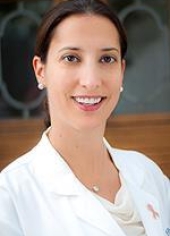Research with Molecular Profiling Tool Shows Older Women Develop Less Aggressive Breast Cancers
The following is a guest post from Elissa Price, M.D., a specialist in Breast Imaging at UCSF Medical Center at Mount Zion.
A recent article in Breast Cancer Research and Treatment offers important and exciting information on breast cancer as a disease entity and for tailoring the treatment of breast cancer to each individual patient. The article, Impact of mammographic screening on the detection of good and poor prognosis breast cancers, used MammaPrint®, an FDA-approved prognostic tool that tests tissue from an individual woman’s breast cancer. The tool provides a score predicting how that specific patient will do given her particular breast cancer. The MammaPrint score thereby helps the woman’s doctors determine how aggressive her tumor is and then decide what treatment is most appropriate.
The study shows that as a woman ages, the chance of her having a less aggressive breast cancer increases, particularly when that cancer is identified with screening mammography. From the standpoint of a radiologist, that final phrase, “particularly when that cancer is identified with screening mammography,” is a key point. Screening mammography is doing its job finding early, curable breast cancers.
This is very solid research, with major implications for the treatment of breast cancer, particularly in older women. With the knowledge of a patient’s good prognosis on MammaPrint, a doctor may suggest a less aggressive treatment strategy. However, MammaPrint’s impact here relates to the appropriate treatment of an already- diagnosed cancer – a very different issue than the diagnosis of that cancer in the first place. So, at this stage in our knowledge, the study’s implications for breast radiologists like myself are limited. Our job is to read mammograms and other forms of breast imaging and to do our best to find any and every breast cancer. In assessing the images, we cannot yet discriminate which abnormalities will correspond to a good or bad MammaPrint score, and so we try to identify all suspicious findings.
Along these lines, the authors make recommendations for very interesting future research. This future work may change how radiologists look at mammograms one day. But for now, breast imagers will continue to try to identify all types of breast cancer, and we continue to recommend annual screening mammography for all women over 40.
For more information on Women’s Imaging at UCSF, please see here.

